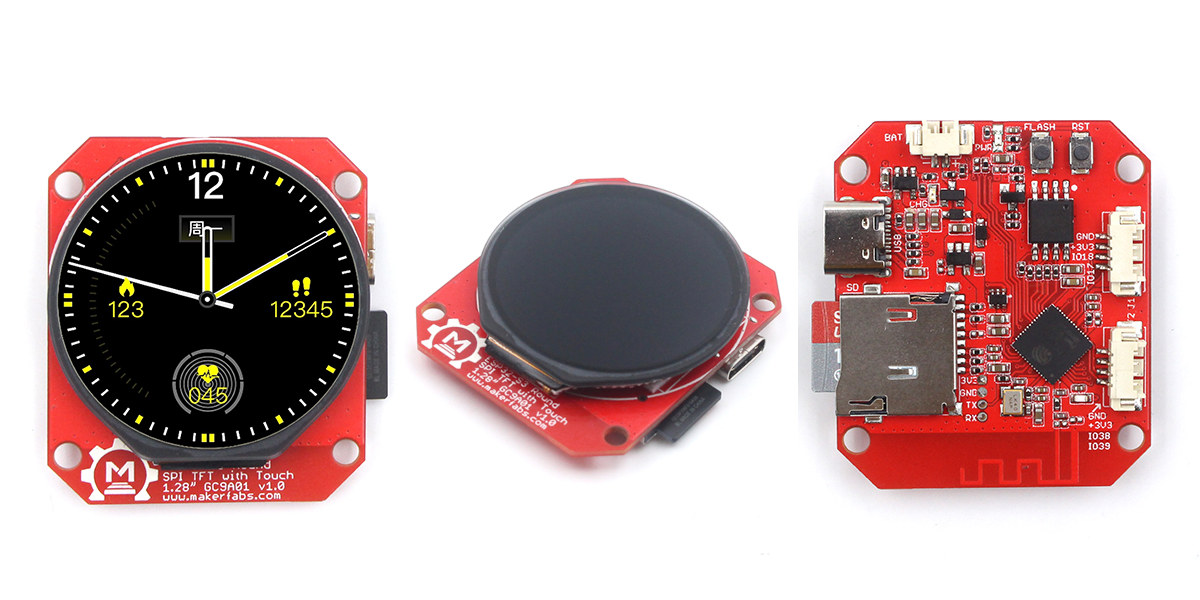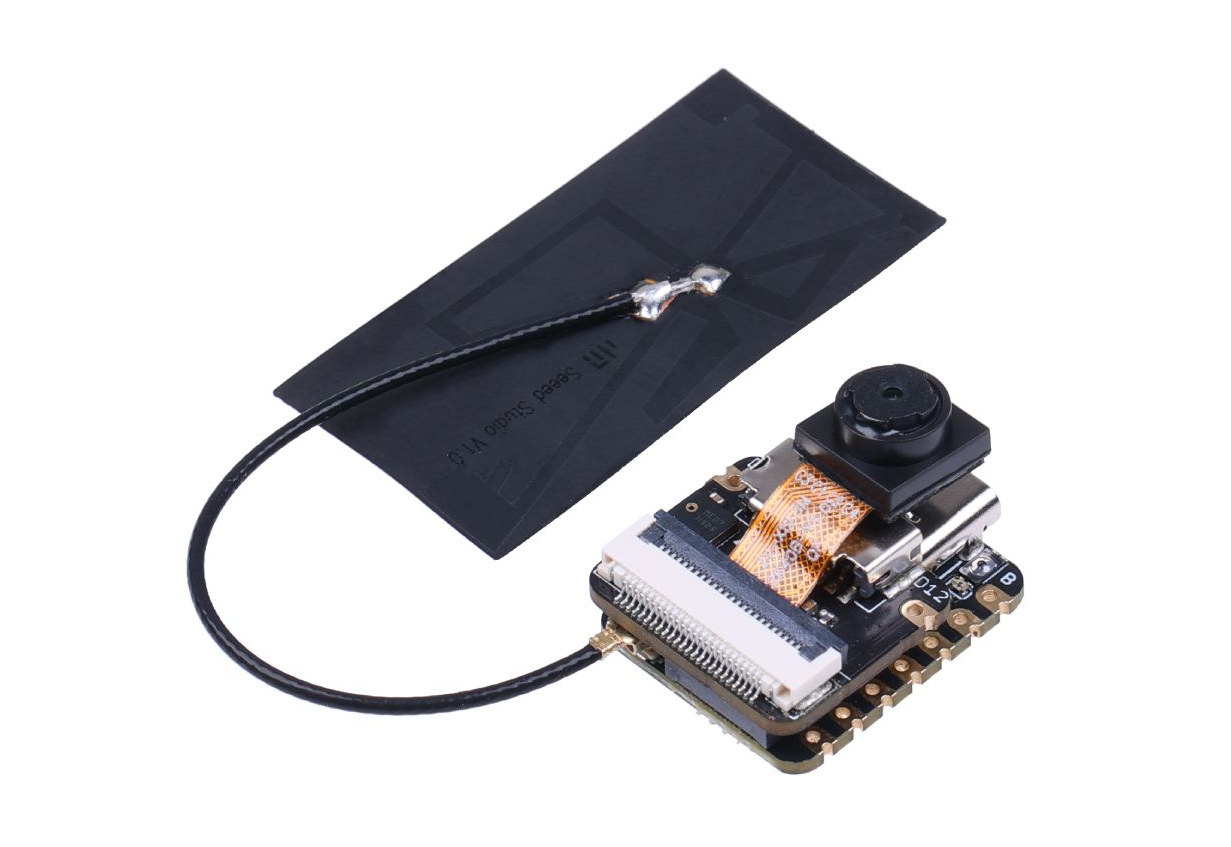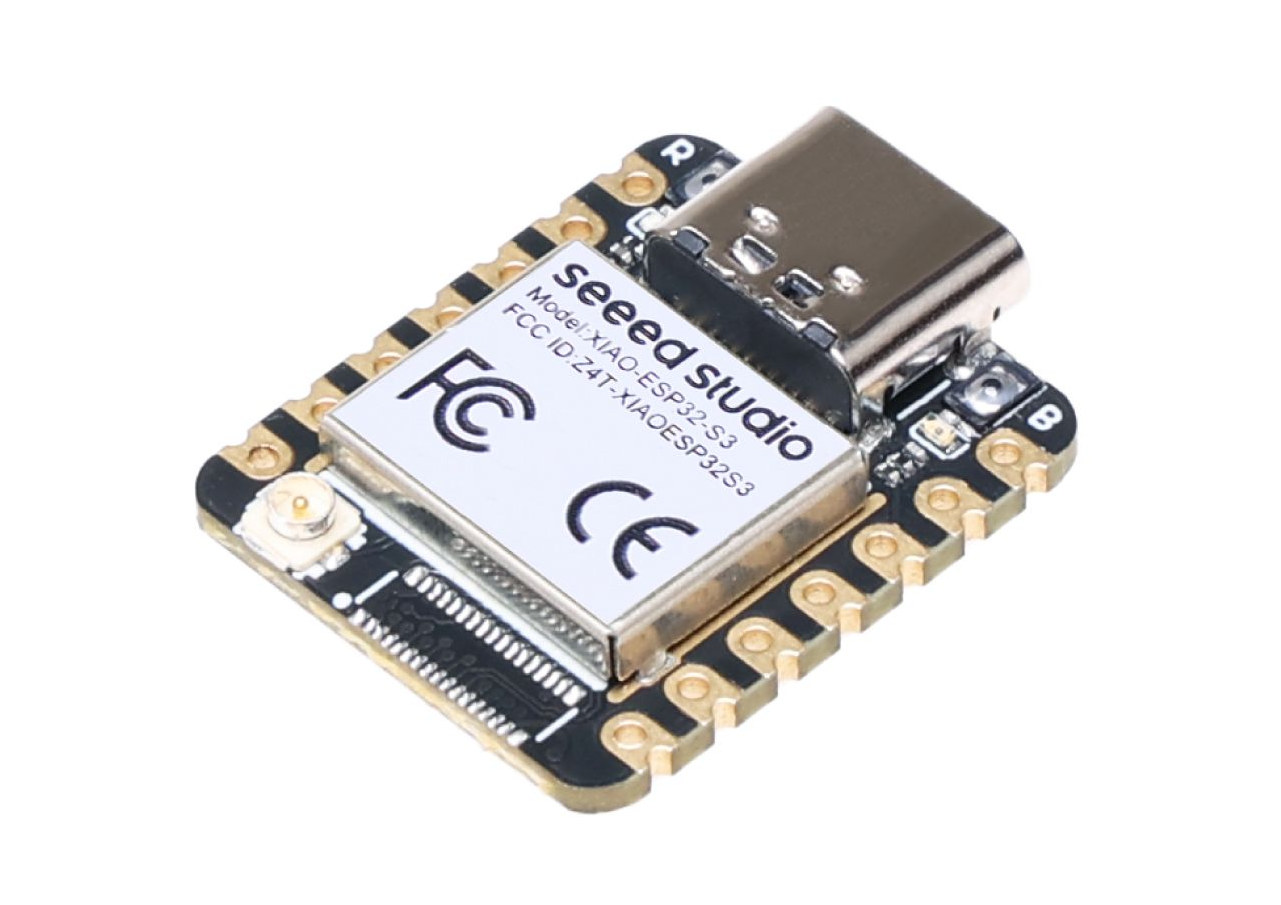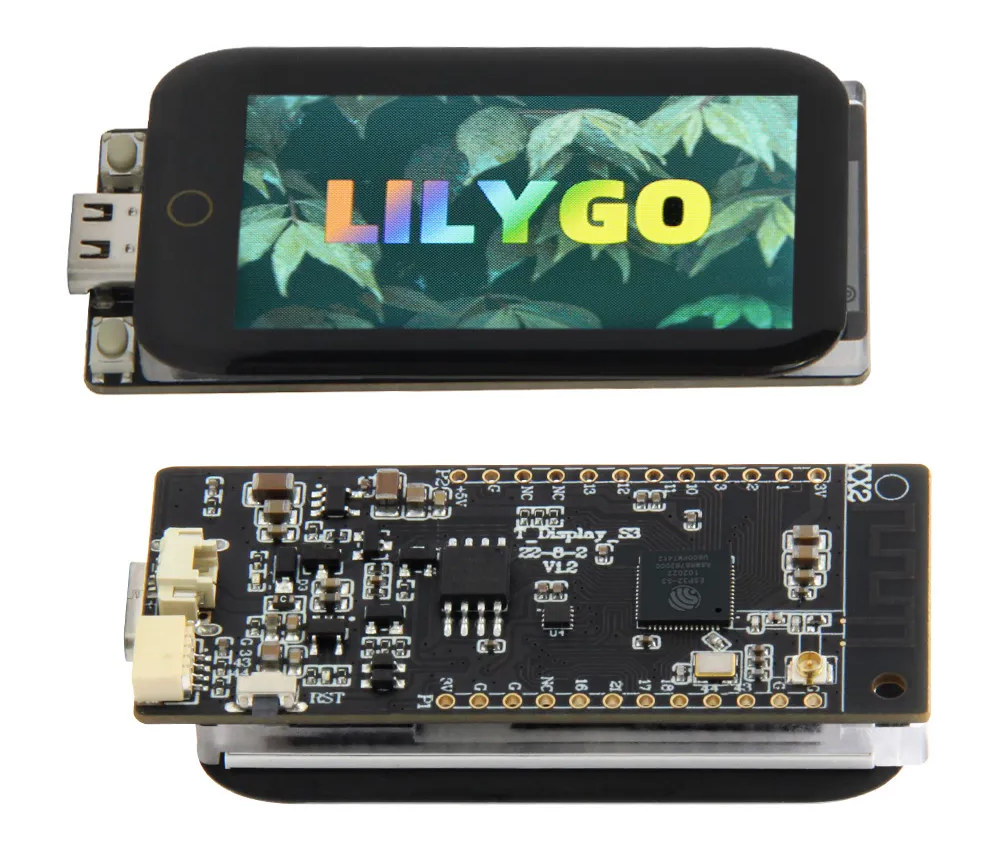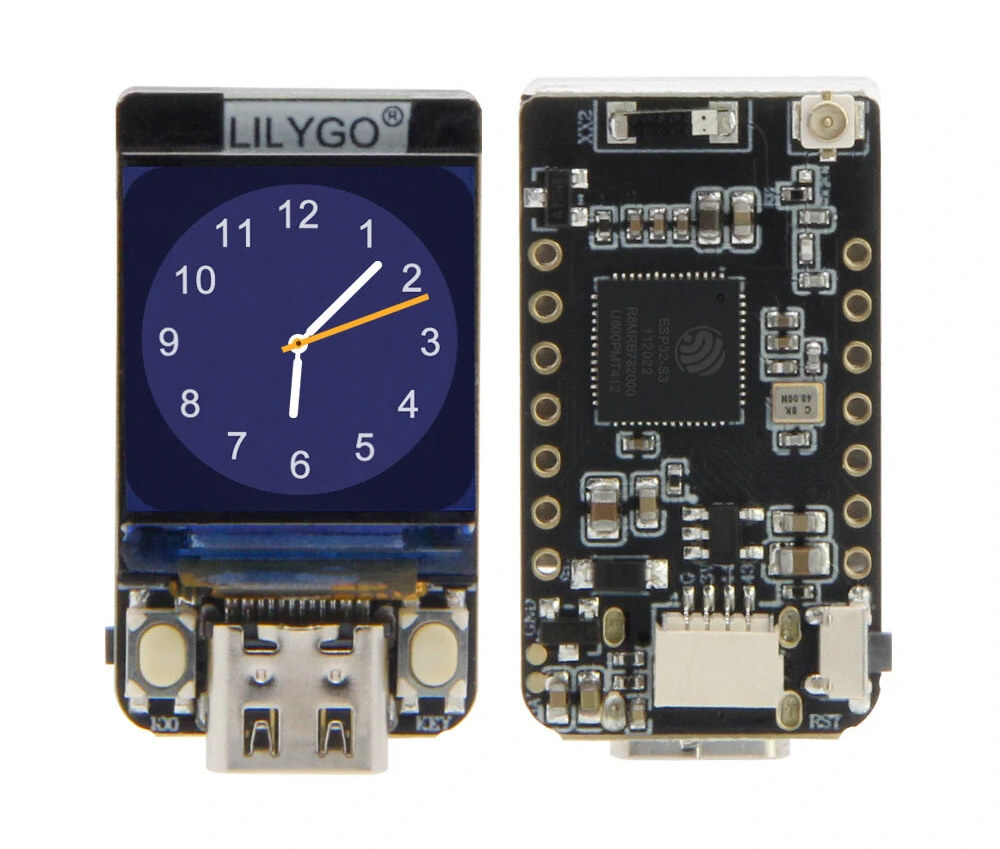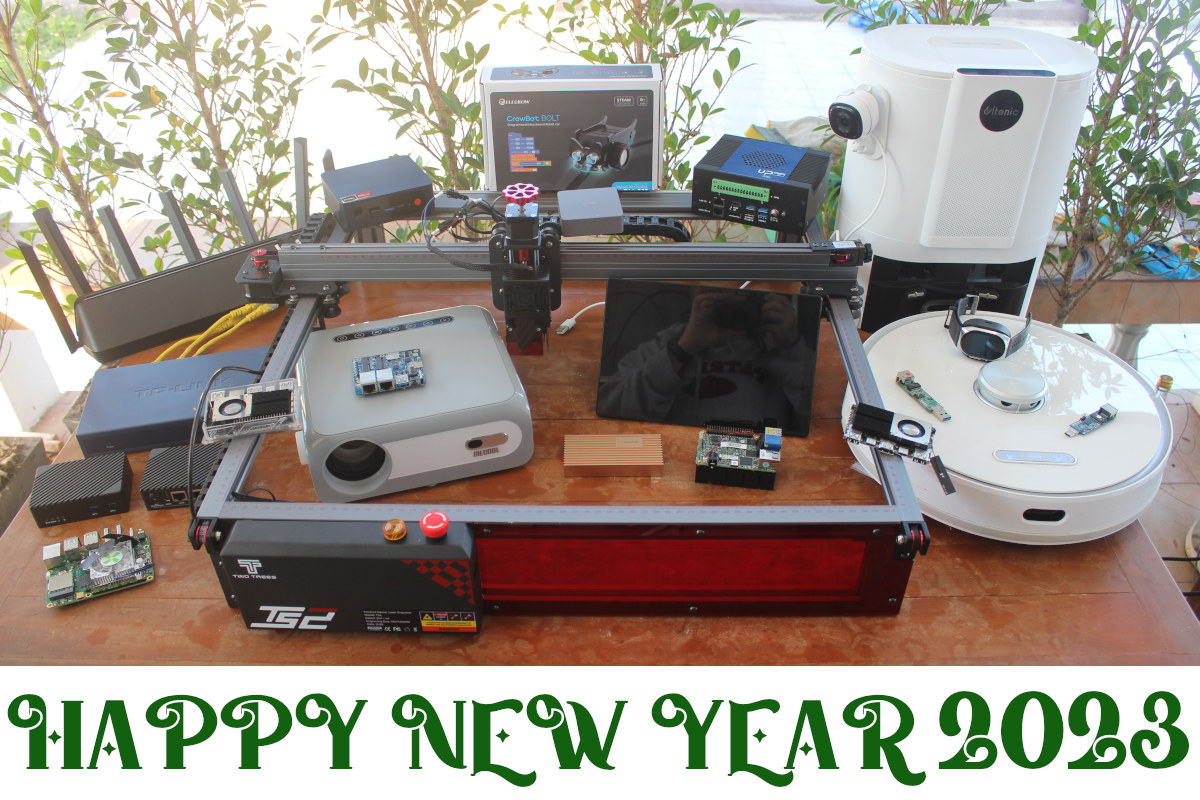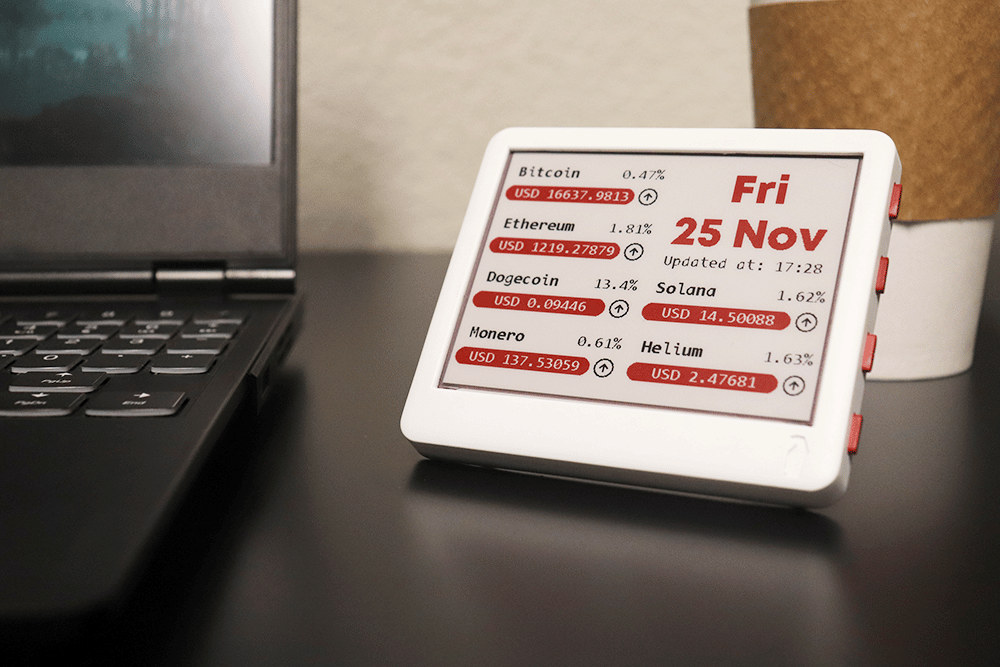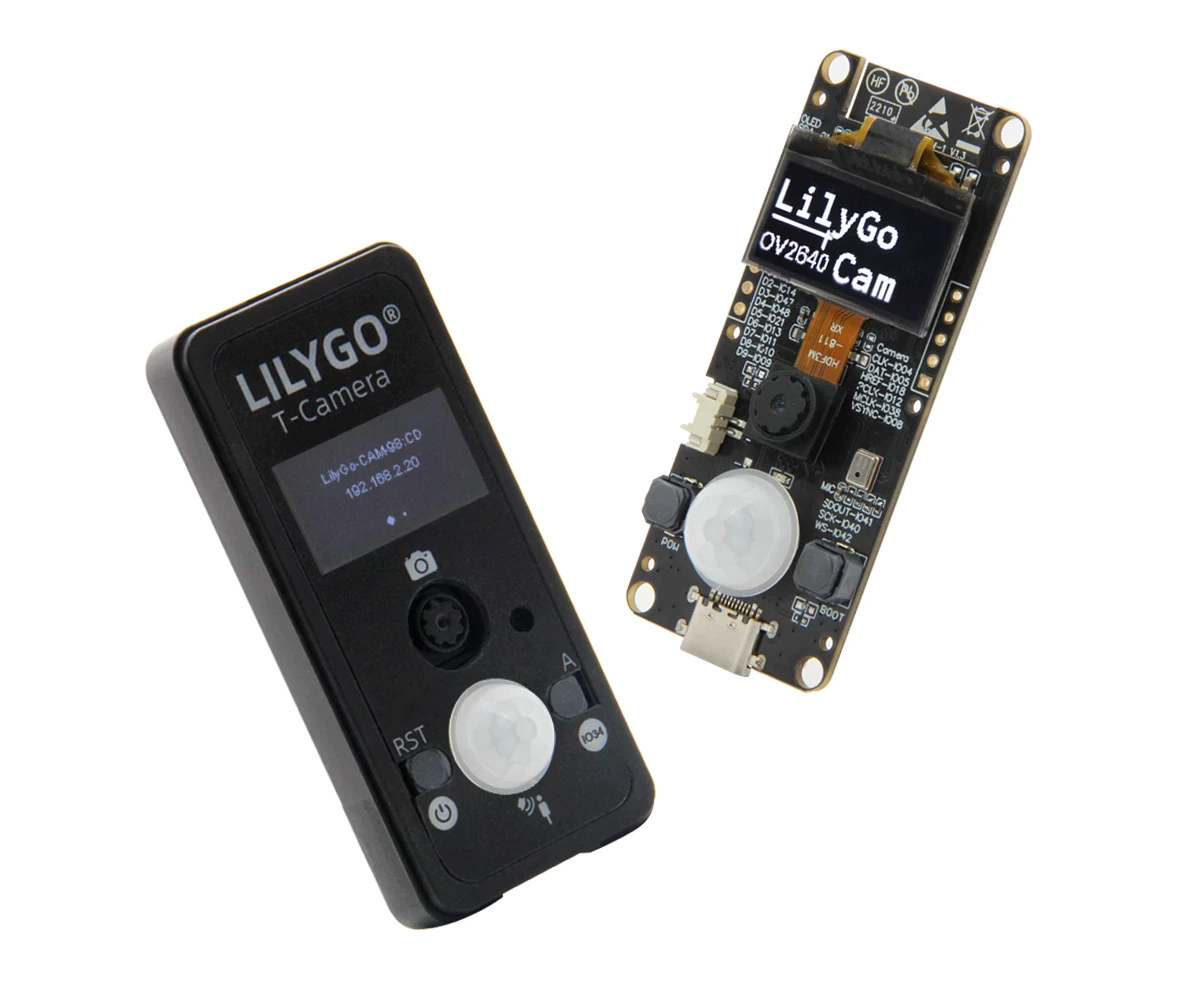Makerfabs “ESP32-S3 Round SPI TFT with Touch 1.28″ is a small ESP32-S3 with a 1.28-inch round color touchscreen display, a microSD card, support for USB and battery power, and two “Mabee” extension connectors. The board joins other ESP32-S3 round display boards such as the Lilygo T-RGB board or Seeed Studio’s Round Display for XIAO, but with a thinner design, and a square PCB with trimmed corners instead of a round PCB like the other two. ESP32-S3 Round SPI TFT with Touch 1.28″ (E32S3128GC) specifications: Wireless MCU – Espressif Systems ESP32-S3R8 dual-core Tensilica LX7 microcontroller @ 240 MHz with vector extension, 512KB SRAM, 8MB PSRAM, Wi-Fi 4 & Bluetooth 5.0 dual-mode (Classic + BLE) connectivity Flash – 128 Mbit (16MB) W25Q128JV SPI flash, microSD card slot Display – 1.28-inch round LCD with 240×240 resolution (GC9A01 SPI driver), touchscreen controller (CST816S) USB – 1x USB Type-C port Expansion 1x 4-pin Mabee I2C […]
XIAO ESP32S3 board gets some senses with a camera and microphone module, plus a round touchscreen display
Last week, we wrote about the new XIAO ESP32S3, a tiny ESP32-S3 board from Seeed Studio. The company has now launched the XIAO ESP32S3 Sense adding a camera and microphone module connected through a board-to-board connector, as well as the Round Display for XIAO that can help people easily create wearable devices with a touchscreen based on any board from the XIAO family. XIAO ESP32S3 Sense XIAO ESP32S2 Sense specifications: Wireless MCU – Espressif Systems ESP32-S3R8 dual-core Tensilica LX7 microcontroller @ 240 MHz with 512KB SRAM, 8MB PSRAM, Wi-Fi 4 & Bluetooth 5.0 dual-mode (Classic + BLE) connectivity Storage – 8MB SPI flash, microSD card slot Antenna – External u.FL antenna USB – USB Type-C port for power and programming Camera – OV2640 camera sensor up to 1600×1200 resolution Audio – Built-in digital microphone Expansion I/Os 2x 7-pin headers with 1x UART, 1x I2C, 1x SPI, 11x GPIO (PWM), 9x […]
XIAO ESP32S3 is a tiny ESP32-S3 WiFi 4 and BLE 5.0 module for IoT, AI, and robotics
Seeed Studio XIAO ESP32S3 is the new member of the company XIAO family with an ESP32-S3 dual-core wireless microcontroller with WiFi 4 and BLE 5.0 designed for Smart Home, IoT, wearables, and Robotics applications. It succeeds the single-core ESP32-C3-based XIAO ESP32C3 board with the same form factor, but the new XIAO ESP32S3 offers more performance, vector extension for machine learning, more flash, and improved power consumption in deep sleep mode. Seeed Studio XIAO ESP32C3 specifications: Wireless MCU – Espressif Systems ESP32-S3R8 dual-core Tensilica LX7 microcontroller @ 240 MHz with 512KB SRAM, 8MB PSRAM, Wi-Fi 4 & Bluetooth 5.0 dual-mode (Classic + BLE) connectivity Storage – 8MB SPI flash Antenna – External u.FL antenna USB – USB Type-C port for power and programming Expansion I/Os 2x 7-pin headers with 1x UART, 1x I2C, 1x SPI, 11x GPIO (PWM), 9x ADC 3.3V I/O voltage (not 5V tolerant) Debugging – JTAG pads Misc […]
T-Display-S3 Touch ESP32-S3 board adds a touchscreen panel
T-Display-S3 Touch is an update to the T-Display-S3 “Basic” ESP32-S3 board that adds a 320×170 touchscreen using a CST816 I2C touchscreen sensor. The rest of the specifications remains the same with an ESP32-S3R8 dual-core WiFi and Bluetooth LE microcontroller, 16MB flash, a 1.9-inch 320×170 color display, a USB Type-C port, a few I/Os, and support for a LiPo battery. T-Display-S3 Touch specifications: Wireless MCU – Espressif Systems ESP32-S3R8 dual-core Tensilica LX7 @ up to 240 MHz with vector instructions for AI acceleration, 512KB RAM, 8MB PSRAM, wireless connectivity Storage – 16MB flash Connectivity via ESP32-S3 2.4 GHz 802.11 b/g/n Wi-Fi 4 with 40 MHz bandwidth support Bluetooth Low Energy (BLE) 5.0 connectivity with long-range support, up to 2Mbps data rate. PCB antenna and external u.FL antenna support Display – 1.9-inch 320×170 IPS full-color LCD using the ST7789V 8-bit parallel display controller and Shenzhen Zhengxin CST816 I2C touchscreen sensor. USB – […]
LILYGO T-QT Pro 0.85-inch WiFi IoT display adds support for battery charging
LILYGO T-QT Pro is an ESP32-S3 WiFi and BLE IoT board with a 0.85-inch color display, 4MB flash, 2MB PSRAM, a USB-C port, a few GPIOs, and support for LiPo battery with charging. It is an upgrade to the ESP32-S3-based LILYGO T-QT V1.1 board that also supports LiPo battery power but lacks a charging circuit, so you had to remove the battery and charge it manually each time. The T-QT Pro adds a charging circuit and switches from an ESP32-S3 with an 8MB flash design to one using ESP32-S3FN4R2 with 4MB flash and 2MB PSRAM. LilyGO T-QT Pro specifications: Wireless MCU – Espressif Systems ESP32-S3FN4R2 dual-core Tensilica LX7 @ up to 240 MHz with vector instructions for AI acceleration, 512KB RAM, 4MB flash, 2MB PSRAM, wireless connectivity Connectivity via ESP32-S3 2.4 GHz 802.11 b/g/n Wi-Fi 4 with 40 MHz bandwidth support Bluetooth Low Energy (BLE) 5.0 connectivity with long-range support, […]
Year 2022 in review – Top 10 posts and statistics
It’s the last day of the year and the time to look at some of the highlights of 2022, some traffic statistics from CNX Software website, and speculate on what 2023 may bring us. The semiconductors shortage continued in 2022, but things are looking brighter in 2023 with the full reopening of the world mixed with forecasts of difficult economic times that should keep the demand/supply equation in check. On the Arm processor front the biggest news of the year, at least in this corner of the Internet, was the launch of the Rockchip RK3588 octa-core Cortex-A76/A55 processor together with interesting single board computers that we’ll discuss below. Announced last year, the Amlogic A311D2 octa-core Cortex-A73/A53 was finally made available in a few SBC’s, and we finally got some news about the Amlogic S928X Cortex-A76/A55 SoC showcased in 8K TV boxes, but we have yet to see it in action. […]
Merlot is an open-source hardware tricolor wireless E-paper display
paperd.ink Merlot is a tricolor E-paper display with an open-source hardware control board based on ESP32 wireless SoC that is programmable with Arduino, MicroPython, or the ESP-IDF framework. We first wrote about the paperd.ink 4.2-inch ESP32-based monochrome e-Paper display last year, but the company has now refined its design with the “paperd.ink Classic” replacing the 3D printed enclosure with a vacuum cast enclosure and adding a 1,900 mAh battery. They also launched a new model, the Merlot, based on the same design but with a display supporting three colors: black, white, and red. Merlot specifications: Wireless module – ESP32-WROOM-32 module with ESP32 dual-core processor, 4 MB SPI flash, 2.4 GHz WiFi 4 & Bluetooth LE connectivity Storage – MicroSD card slot for storing images, files, etc Display – 4.2″ tricolor e-Paper display with 400 x 300 resolution; full refresh: ~ 17 seconds; partial update: also 17 seconds… USB – 1x […]
T-Camera S3 – An ESP32-S3 board with camera, display, PIR motion sensor, and microphone
LilyGO has launched a new ESP32-S3 WiFi & BLE camera board with the T-Camera S3 also featuring a small display, a PIR motion sensor, and a microphone, as well as an optional plastic shell. The T-Camera S3 is an evolution of the TTGO T-Camera ESP32 board introduced in 2019 with many of the same features, but the ESP32 microcontroller has been replaced with an ESP32-S3 microcontroller with vector extensions that makes it suitable for machine learning and computer vision applications. The new board also comes with a larger 16 MB SPI flash, more I/Os, and a few other small changes. T-Camera S3 specifications: ESP32-S3-WROOM-1 wireless module SoC – ESP32-S3FN16R8 dual-core Tensilica LX7 microcontroller @ 240 MHz (Note: this SKU is not listed in the official ESP32-S3 datasheet) with 2.4 GHz 802.11n WiFI 4 and Bluetooth 5.0 LE connectivity Memory – 8MB PSRAM Storage – 16MB SPI flash Camera – 2MP […]


